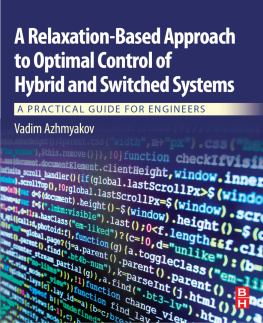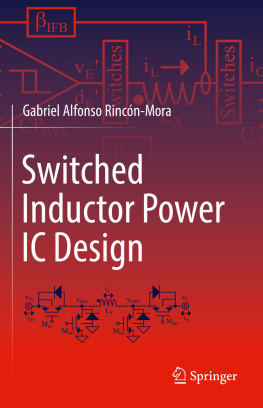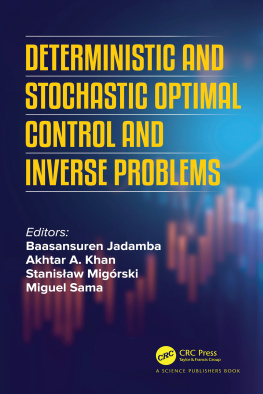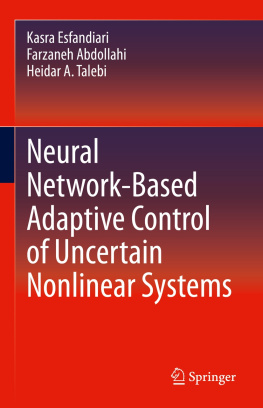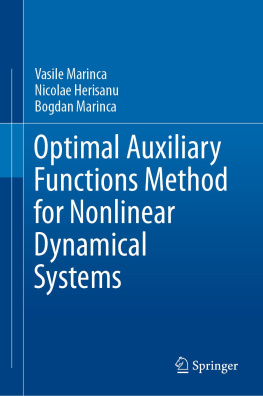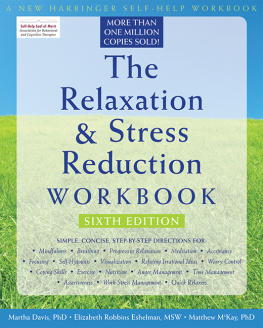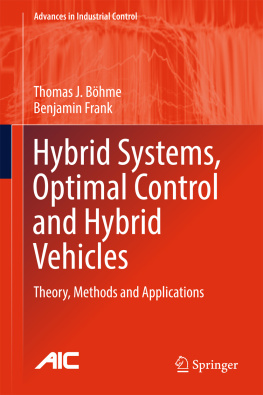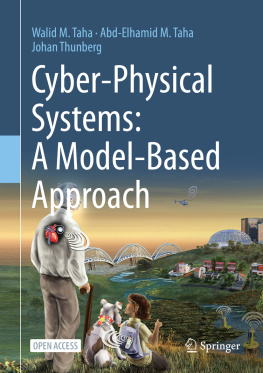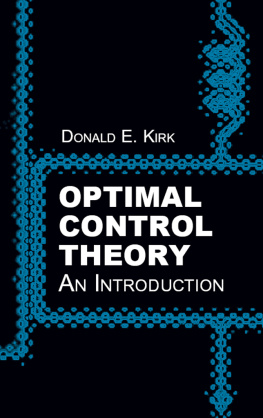A Relaxation-Based Approach to Optimal Control of Hybrid and Switched Systems
A Practical Guide for Engineers
First edition
Vadim Azhmyakov
Department of Mathematical Sciences, Universidad EAFIT, Medellin, Republic of Colombia

Copyright
Butterworth-Heinemann is an imprint of Elsevier
The Boulevard, Langford Lane, Kidlington, Oxford OX5 1GB, United Kingdom
50 Hampshire Street, 5th Floor, Cambridge, MA 02139, United States
Copyright 2019 Elsevier Inc. All rights reserved.
No part of this publication may be reproduced or transmitted in any form or by any means, electronic or mechanical, including photocopying, recording, or any information storage and retrieval system, without permission in writing from the publisher. Details on how to seek permission, further information about the Publisher's permissions policies and our arrangements with organizations such as the Copyright Clearance Center and the Copyright Licensing Agency, can be found at our website: www.elsevier.com/permissions.
This book and the individual contributions contained in it are protected under copyright by the Publisher (other than as may be noted herein).
Notices
Knowledge and best practice in this field are constantly changing. As new research and experience broaden our understanding, changes in research methods, professional practices, or medical treatment may become necessary.
Practitioners and researchers must always rely on their own experience and knowledge in evaluating and using any information, methods, compounds, or experiments described herein. In using such information or methods they should be mindful of their own safety and the safety of others, including parties for whom they have a professional responsibility.
To the fullest extent of the law, neither the Publisher nor the authors, contributors, or editors, assume any liability for any injury and/or damage to persons or property as a matter of products liability, negligence or otherwise, or from any use or operation of any methods, products, instructions, or ideas contained in the material herein.
Library of Congress Cataloging-in-Publication Data
A catalog record for this book is available from the Library of Congress
British Library Cataloguing-in-Publication Data
A catalogue record for this book is available from the British Library
ISBN: 978-0-12-814788-7
For information on all Butterworth-Heinemann publications visit our website at https://www.elsevier.com/books-and-journals

Publisher: Mara Conner
Acquisition Editor: Sonnini R. Yura
Editorial Project Manager: Joshua Mearns
Production Project Manager: Bharatwaj Varatharajan
Designer: Victoria Pearson
Typeset by VTeX
Dedication
To my students from the North and South Americas
Preface
This book is written as an application-oriented extension of the conventional relaxation theory to hybrid and switched optimal control problems. Modern optimal control theory is concerned with the analysis and design of sophisticated dynamical systems, where the aim is at steering such a system from a given configuration to some desired target by minimizing a suitable performance. Nowadays this theory constitutes a powerful design methodology for the computer-oriented development of several types of high-performance controllers. General optimal control problems associated with various types of advanced control systems have been comprehensively studied due to their natural engineering applications. The material discussed in this research monograph is the result of the author's work at the Ernst-Moritz-Arndt University of Greifswald (Greifswald, Germany), the Centro de Investigacion y de Estudios Avanzados del Instituto Politecnico Nacional (Mexico City, Mexico), and the University of Medellin (Medellin, Colombia). The main purpose of this book is to propose a unified approach to effective and numerically tractable relaxation schemes for optimal control of hybrid and switched systems. We study several generic classes of hybrid and switched dynamic models and corresponding optimal control problems in the context of suitable relaxation schemes.
Relaxing the initial problem has various meanings in applied mathematics, depending on the areas where it is defined, depending also on what one relaxes (a functional, the underlying space, etc.). In the context of an optimal control problem, when dealing with the minimization of an objective functional, the most common way of looking at relaxation is to consider the lower semicontinuous hull of this functional determined on a convexification of the set of admissible controls. The concept of relaxed controls was introduced by L.C. Young in 1937 under the name of generalized curves and surfaces. It has been used extensively in the professional literature for the study of diverse optimal control problems. It is common knowledge that a real-world optimal control problem does not always have a (mathematical) solution. On the other hand, the corresponding relaxed problem has an optimal solution under some mild assumptions. In practice, this solution can be considered as a suitable approximation for the sophisticated initial problem. In the absence of the so-called relaxation gap, the generalized problem is of prime interest for the initial optimal control problem. In this case, the minimal value of the objective functional in the initial problem coincides with the minimum of the objective functional in the relaxed problem. Therefore, in that situation, an adequately relaxed problem can be used as a theoretical fundament for adequate numerical solution algorithms for the initial problem. When solving optimal control problems with ordinary differential equations, we deal with functions and systems which, except in very special cases, are to be replaced by numerically tractable approximations. In contrast to the conventional optimal control problems an effective implementation of adequate computational schemes for hybrid/switched system optimization is predominantly based on the relaxed controls. Therefore, our aim is to consider the relaxations of the hybrid and switched optimal control problems in a close methodological relationship to the corresponding numerical methods and possible engineering applications.
Recall that various types of hybrid and switched control systems and the related optimal control problems have been comprehensively studied in the past several years due to their important engineering applications. Let us mention here some real-world applications from the mobile robot technology, intelligent automotive control, modern telecommunications, process control, and data science. We first give an extensive overview of the existing (conventional and newly developed) relaxation techniques associated with the conventional systems described by ordinary differential equations. Next we construct a self-contained relaxation theory for optimal control processes governed by various types (subclasses) of general hybrid and switched systems. Note that due to the extreme complexity of hybrid/switched dynamic systems this construction is a challenging analytic and computational problem and cannot be considered as a simple theory/fact transfer from the conventional optimal control to hybrid and switched cases. Let us also note that the book we propose contains all mathematical tools that are necessary for an adequate understanding and use of the sophisticated relaxation techniques. All in all, this manuscript follows the engineering and numerical concepts. However, it can also be considered as a mathematical compendium that contains all the necessary formal results and some important algorithms related to the modern relaxation theory. This fact makes it possible to use this book in systems engineering (specifically in electrical, aerospace, and financial engineering) and in practical systems optimization.

